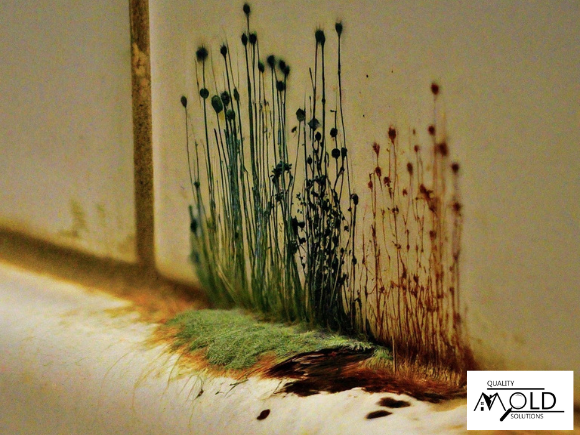Mold growth is a significant concern for homeowners in Florida due to the state’s warm, humid climate, which creates an ideal environment for mold spores to thrive. Understanding where mold is most likely to grow indoors can help you take proactive steps to prevent and address this pervasive issue. Here we will discuss the most common places mold can grow indoors in Florida, providing you with essential information to keep your home mold-free.
Why Florida is Prone to Mold Growth
Florida’s climate is characterized by high humidity, frequent rainfall, and warm temperatures—all of which contribute to mold growth. Mold spores are always present in the air, and when they find a moist environment, they can quickly colonize and spread. Given Florida’s climatic conditions, it’s no surprise that mold growth is a common problem in homes across the state.
Key Areas Prone to Mold Growth in Florida Homes
1. Bathrooms
Bathrooms are one of the most common places for mold growth in Florida due to the high levels of moisture generated by showers, baths, and sinks. The constant presence of water and steam creates an ideal breeding ground for mold.
- Showers and Bathtubs: Mold often grows on grout lines, tiles, and around faucets where water tends to accumulate.
- Under Sinks: Leaks and condensation can create moisture problems in cabinets under sinks, leading to mold growth.
- Exhaust Fans: Without proper ventilation, moisture can become trapped, promoting mold growth on walls and ceilings.
Prevention Tips:
- Use exhaust fans during and after showers to reduce humidity.
- Regularly clean and dry surfaces, especially grout lines and tiles.
- Fix any leaks promptly to prevent water accumulation.
2. Kitchens
Kitchens are another hotspot for mold growth due to the frequent use of water and appliances that generate heat and moisture.
- Under Sinks: Similar to bathrooms, kitchen sinks can develop leaks that lead to mold growth in cabinets and under countertops.
- Refrigerators: Condensation and leaks from the refrigerator can create moist conditions conducive to mold growth.
- Dishwashers: The heat and moisture from dishwashers can promote mold growth on surrounding cabinets and walls.
Prevention Tips:
- Ensure proper ventilation when cooking to reduce humidity.
- Regularly check for and repair any leaks under sinks and around appliances.
- Clean and dry surfaces frequently to prevent mold spores from taking hold.
3. Basements and Crawl Spaces
Basements and crawl spaces are particularly vulnerable to mold growth due to their proximity to the ground and potential for poor ventilation and high humidity.
- Damp Walls and Floors: Water intrusion from the ground or through foundation cracks can lead to persistent dampness, promoting mold growth.
- Storage Areas: Cardboard boxes, fabric, and other organic materials stored in basements and crawl spaces can provide food for mold.
Prevention Tips:
- Use dehumidifiers to maintain low humidity levels.
- Ensure proper drainage around the foundation to prevent water intrusion.
- Store items in plastic containers rather than cardboard boxes to reduce mold risk.
4. Attics
Attics can also be prone to mold growth, particularly if they are not adequately ventilated or if there are roof leaks.
- Roof Leaks: Water from leaks can seep into attic spaces, creating moist conditions ideal for mold growth.
- Poor Ventilation: Without adequate ventilation, heat and humidity can build up in attics, promoting mold growth on insulation, wood, and other materials.
Prevention Tips:
- Ensure proper ventilation in the attic to reduce heat and humidity.
- Inspect the roof regularly for leaks and repair them promptly.
- Consider using mold-resistant insulation materials.
5. HVAC Systems
HVAC systems (heating, ventilation, and air conditioning) can distribute mold spores throughout a home if they become contaminated.
- Air Ducts: Mold can grow in the moist, dark environments of air ducts, particularly if there is condensation or water buildup.
- Drain Pans and Coils: Mold can develop in HVAC components like drain pans and coils if they are not regularly cleaned and maintained.
Prevention Tips:
- Schedule regular maintenance and cleaning of HVAC systems.
- Ensure drain pans are clean and free of standing water.
- Replace air filters regularly to prevent mold spores from circulating.
6. Laundry Rooms
Laundry rooms can be susceptible to mold growth due to the use of water and the presence of damp clothes.
- Washing Machines: Front-loading washing machines, in particular, can harbor mold in the rubber gasket around the door.
- Dryers: Improperly vented dryers can release moisture into the air, increasing the risk of mold growth.
Prevention Tips:
- Leave the washing machine door open after use to allow it to dry.
- Regularly clean the rubber gasket on front-loading washers.
- Ensure the dryer is properly vented to the outside to reduce indoor humidity.
 7. Windows and Doors
7. Windows and Doors
Windows and doors can be areas where mold growth occurs, especially if there are leaks or condensation.
- Window Frames: Condensation can accumulate on window frames, providing moisture for mold to grow.
- Door Frames: Leaks around door frames can lead to moisture buildup and mold growth in surrounding walls and floors.
Prevention Tips:
- Ensure windows and doors are properly sealed to prevent leaks.
- Use double-pane windows to reduce condensation.
- Regularly clean and dry window sills and frames.
Signs of Mold Growth
Recognizing the signs of mold growth can help you address the problem before it becomes severe. Common signs include:
- Visible Mold: Black, green, or white patches on walls, ceilings, or other surfaces.
- Musty Odor: A persistent musty smell, especially in areas with high moisture levels.
- Health Symptoms: Allergic reactions, respiratory issues, and other health problems, particularly if they improve when away from the home.



